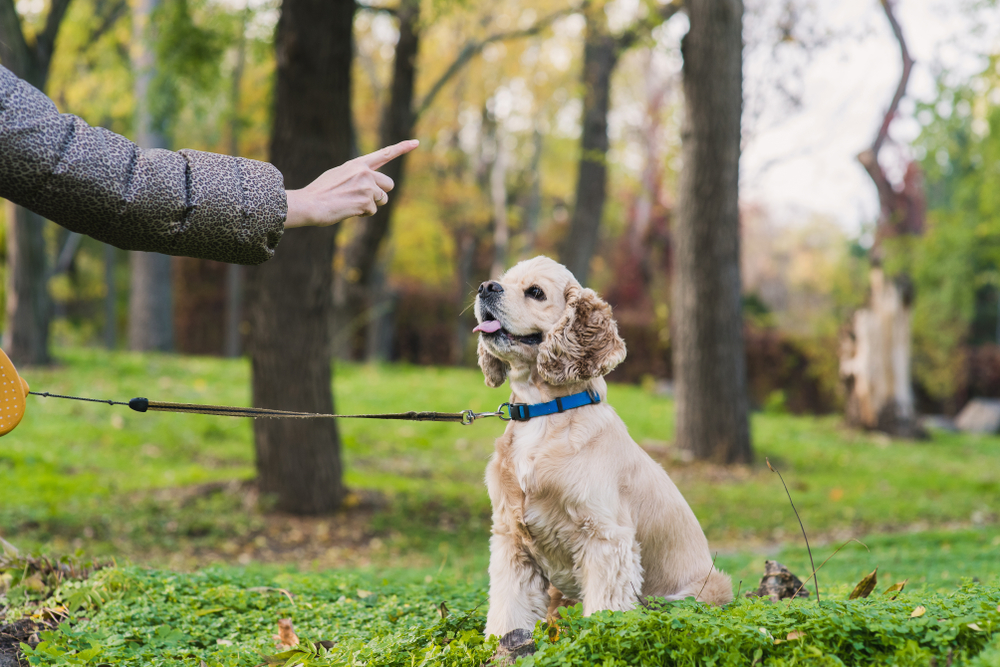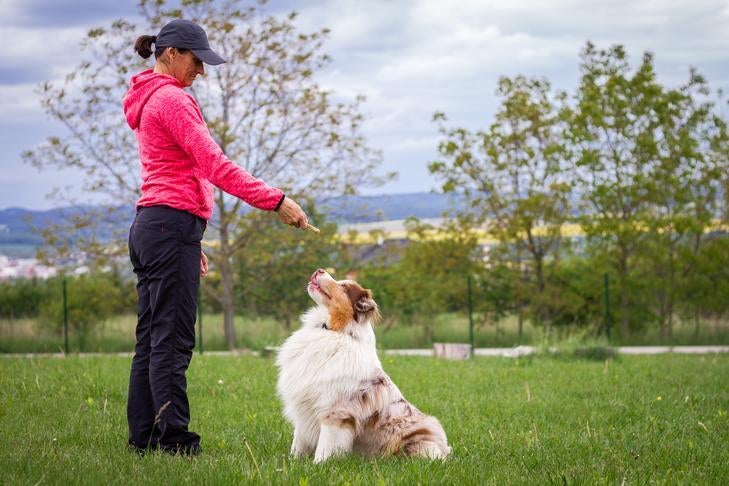Top Pet Dog Educating Tips for a Mannerly Companion
Educating your pet to be a well-behaved companion requires a nuanced understanding of canine habits and the execution of effective strategies. Necessary commands such as "Sit," "Remain," and "Come" work as the foundation for good manners, while favorable reinforcement strategies can substantially improve learning. Additionally, establishing a consistent routine and focusing on very early socializing are critical elements that add to a harmonious connection. However, the journey to a courteous animal entails even more than just these fundamentals; it requires a much deeper expedition of strategies that can transform your training strategy.
Comprehending Dog Habits
Understanding canine behavior is crucial for reliable canine training and cultivating an unified partnership in between pets and their proprietors. Canines are complicated animals, exhibiting a large range of habits affected by genes, environment, and socializing. Recognizing the underlying motivations for a pet's actions-- such as fear, excitement, or territorial reactions-- can considerably enhance training effectiveness.
Observing body language is an essential element of comprehending canine actions. Tail setting, ear alignment, and position can offer beneficial insights into a pet dog's emotional state. A wagging tail does not always suggest happiness; it can likewise represent frustration or anxiousness. In addition, social interactions with various other canines and human beings play a vital function in shaping behavior. Pets that experience favorable socialization are usually extra versatile and courteous.

Important Educating Commands
Understanding important training commands is vital for establishing effective interaction between pet dogs and their proprietors. These commands serve as the structure for a well-behaved dog and can dramatically boost the total relationship between pet and owner.
"Stay" enhances a dog's capability to stay in one placement, promoting self-control. "Down" advises your dog to lie down, which can assist in managing excited actions. "Heel" teaches your canine to stroll alongside you, fostering much better chain good manners.
Consistency and clarity in command delivery are important. Each command must be coupled with a particular hand signal or gesture to enhance understanding. Practicing these commands in different environments aids pets generalize their training and react appropriately, regardless of disturbances. By spending time in educating these crucial commands, owners can cultivate a harmonious and considerate relationship with their canine buddies, improving both safety and satisfaction in daily interactions.
Positive Reinforcement Techniques
Favorable reinforcement methods are essential approaches in dog training that concentrate on fulfilling preferred habits to urge their reappearance. This strategy leverages the all-natural learning procedures of canines, allowing them to associate particular activities with favorable end results. By utilizing treats, praise, or play as benefits, trainers can effectively encourage dogs to duplicate the actions they desire to strengthen.
To carry out positive reinforcement, it is important to deliver incentives instantly after the preferred behavior happens. This assists the pet make a clear connection in between their action and the incentive. Consistency is likewise crucial; benefits ought to be provided whenever the desired actions is exhibited during the initial training stage, slowly transitioning to a variable schedule as the behavior ends up being much more trustworthy.
Additionally, selecting the ideal kind of reward is crucial. While treats are commonly effective, some dogs may respond better to spoken praise or interactive play. Understanding your dog's choices can enhance the training experience. Ultimately, positive support promotes a trusting connection between the canine and proprietor, making training a much more enjoyable and effective procedure that constructs a mannerly buddy.

Socializing Techniques
Effective socialization strategies are critical for a pet's growth, as they help develop a well-rounded and confident buddy. Very early exposure to different atmospheres, people, and other animals is important to protect against behavior issues in adulthood. Begin this procedure during try this out the important socializing period, which click for more commonly happens in between three and fourteen weeks of age.
Present your puppy to diverse stimulations, such as various surface areas, sounds, and scents. Managed encounters with various other pets and friendly human beings can promote favorable organizations. Pup classes are an excellent source, supplying organized atmospheres for social communication and learning standard commands.
Gradually raise the complexity of socializing experiences. Take your pet dog to parks, pet-friendly stores, and public events, ensuring each experience declares. Observe your pet dog's reactions and eliminate them from overwhelming scenarios to prevent fear-based reactions.
Make use of positive reinforcement to compensate tranquil and confident habits during social communications. Bear in mind, patience is essential; each pet has its very own rate for adjusting to new experiences.
Uniformity and Routine
Developing consistency and routine in pet training is vital for fostering a sense of security and understanding in your animal. Pets prosper on predictability; recognizing what you could try these out to anticipate assists them feel safe and reduces stress and anxiety. When training, it is important to utilize the very same commands, motions, and rewards consistently. This harmony help in reinforcing wanted habits and aids your pet swiftly associate certain actions with certain results.
Integrating a structured routine right into your training sessions likewise improves your canine's learning experience - Dog training near me. Schedule day-to-day training sessions at the very same time every day, ensuring that both you and your pet are psychologically prepared. Short, regular training sessions are extra efficient than long, occasional ones; purpose for 5 to 10 mins of concentrated training numerous times a day
Incorporate training right into day-to-day activities-- reward your canine for sitting before meals or walking smoothly on a chain. Generally, a constant strategy, paired with a structured regimen, lays the structure for a mannerly buddy, advertising an unified partnership in between you and your pet.
Final Thought
Positive support techniques serve to motivate preferred habits, while very early socializing prepares pet dogs for varied atmospheres. By highlighting these key aspects, the bond in between owner and canine reinforces, eventually leading to a harmonious and meeting connection.